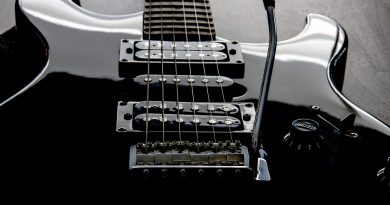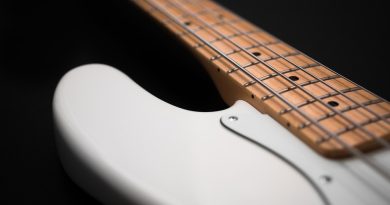Mastering Power Chords: A Beginner’s Guide to Dominating the Guitar
Mastering Power Chords: A Beginner’s Guide to Dominating the Guitar
Power chords are a staple in the world of rock and roll, and mastering them is essential for any guitarist looking to rock out like a pro. These versatile and powerful chords are a fundamental building block of many popular songs, and learning how to play them effectively can take your guitar playing to the next level. In this beginner’s guide, we will explore what power chords are, how to play them, and how to use them to create dynamic and powerful music.
What are Power Chords?
Power chords are a type of chord commonly used in rock, punk, and metal music. They are characterized by their strong and aggressive sound, which is achieved by playing just two notes: the root note of the chord and its fifth. This simplicity gives power chords their signature sound and makes them easy to play, even for beginners.
Power chords are typically played on the lower strings of the guitar, using either the index finger and ring finger or the index finger and pinky finger to fret the notes. This allows for easy transitioning between chords and makes power chords a versatile and essential tool for any guitarist.
How to Play Power Chords
To play a power chord, start by placing your index finger on the root note of the chord. This note will determine the name of the chord (for example, if you place your finger on the 3rd fret of the E string, you are playing a G power chord). Next, place your ring finger (or pinky finger) on the fifth fret above the root note on the string below. This interval of a perfect fifth gives power chords their strong and harmonious sound.
Once you have your fingers in position, press down firmly on the frets and strum the strings with your pick or fingers. You should hear a powerful and aggressive sound that is characteristic of power chords. Practice transitioning between different power chords to improve your speed and accuracy.
Using Power Chords in Music
Power chords are incredibly versatile and can be used in a variety of musical genres and styles. They are often used in rock and roll, punk, metal, and other aggressive music styles to create a driving and energetic sound. Power chords are also commonly used in pop music to add depth and power to a song.
One of the great things about power chords is that they can be easily transposed to different keys by moving your hand up or down the fretboard. This makes them a flexible and adaptable option for any song or musical situation.
Tips for Mastering Power Chords
Practice regularly: Like any skill, mastering power chords takes practice and dedication. Set aside time each day to work on your chord transitions and finger strength.
Use a metronome: Playing power chords to a steady beat can help improve your timing and rhythm. Practice playing along to a metronome to improve your overall musicality.
Experiment with different chord voicings: Power chords can be played in a variety of positions on the fretboard. Experiment with different voicings to find the sound that works best for you.
Incorporate power chords into your favorite songs: One of the best ways to learn and master power chords is by playing them in the context of your favorite songs. Pick a few songs that feature power chords and practice playing along with them.
Conclusion
Mastering power chords is a key step in becoming a proficient guitarist. These versatile and powerful chords are a fundamental building block of many popular songs, and learning how to play them effectively can take your guitar playing to the next level. By following the tips outlined in this beginner’s guide, you can hone your skills and become a master of power chords in no time. So grab your guitar, crank up the volume, and get ready to rock out like a pro!






